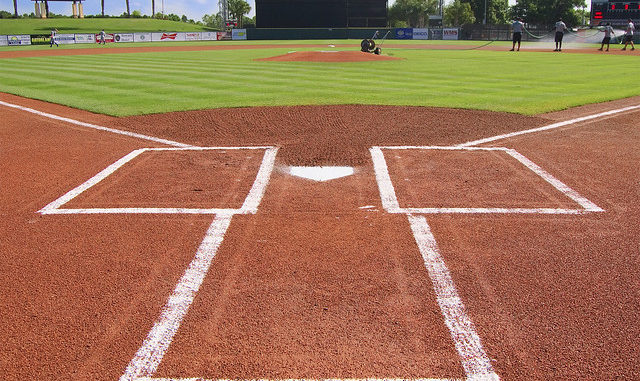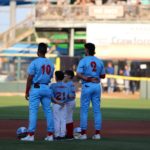
We here at Prospects1500 are committed to covering the minor leagues. Our interest in prospects, however, grew out of a love of the game of baseball. Currently, there are numerous issues surrounding the game that will likely need to be addressed at some point. What we envision for this space is a series of “Thinking About The Game” articles that deal with some of these issues. We hope that what we present here is out of the mainstream, whether it is directly addressing one of those issues or throwing out an idea to deal with some other pressing questions.
These opinions and ideas are not necessarily those of Prospects1500, but an effort to create discussion and look at things in different ways. We hope you enjoy these articles when they appear, and we look forward to an exchange of ideas in our comments section and/or on Twitter at @Prospects1500.
Unintended Consequences
The Tampa Bay Rays offended a lot of people earlier this spring as they renewed the contract of Cy Young Award winner Blake Snell for just a small raise. A week later, when the Rays signed Snell to a five-year, $50 million extension, those same people were still unhappy. For many, this is yet another example of what is wrong with some MLB teams and especially the Rays. For others, it’s just the way the business of the game works.
In reality, this situation and those like it are really about deeper and more fundamental questions. What is fair when it comes to MLB and its players? Is there any acceptable amount of profit that teams should be allowed to make? Should teams that make a healthy profit instead spend some or most of that money in an effort to make an improvement to the team?
The biggest problem with these questions is that there are no right answers, though everyone has their own answer based on the point of view that they take toward these issues. There are no right answers partly because baseball’s finances are tough to pin down. Forbes publishes their list every season, but they are quick to remind everyone there that they make their best guesses based on the information they can glean from various sources.
According to their most recent list, from the 2017 season, teams earned revenues ranging from the Yankees at 9M to the A’s at 0M. The Rays were tied with the Marlins for 28th at 9M. Twenty-four of the thirty teams made a profit, led by the Cubs at 2M.
The Rays made $23M, according to the list, putting them roughly in the middle of the pack in that category. They tied for 17th with the Twins. This seems to be the thing that angers most people. It appears that there is a perception that a team that has revenues consistently in the bottom five of the league and then pays their players a bottom five payroll should probably have bottom five profits. This misses two fundamental points, one about business in general and the other about the Rays specifically.
People go into business trying to make money. They invest their money and/or they get others to invest with them and the idea is for everyone to make more than they put in. The real goal is to make as much as possible while still balancing the responsibilities you have to your producers and consumers. MLB owners operate in some very nuanced areas in dealing with their producers and consumers. The relationship with its producers is dictated to some degree by the CBA and every team, the Rays included, uses that to their advantage when they can in the same way that the players use it to their advantage when they can. The Rays’ situation with Snell is not at all unprecedented. You don’t have to go back too far to find the Angels renewing Mike Trout for the MLB minimum salary in 2013 after he put up historic numbers in his first full season. According to Baseball Reference, since 1900, only Dwight Gooden put up a higher WAR in his age 20 season than Trout, yet Trout played 2014 for the league minimum. The fact that he has done pretty well for himself since and recently signed the richest deal in baseball history does not really factor in here, though that has also created some hand-wringing over the theoretical discount the Angels are getting.
MLB has numerous consumers and there are different relationships with each one. There are the fans, the local media markets and national media markets. Media, both local and national, can’t seem to get enough of live sports so the relationships there are becoming more lucrative than those with the fans, but the fans aren’t being ignored. Even when teams are not putting the highest quality product on the field, for whatever reason, they are doing a lot of work in the community to build good will.
As for the Rays specifically, people who accuse the Rays of being cheap and who want to seek out every opportunity to hold them up to ridicule haven’t really taken the time to dig more deeply into the current ownership and what they have done. Stu Sternberg took over as Managing General Partner of the team in 2005 and he began to put a plan in place to make the team competitive on the field and financially stable. He also knew that he had to improve the fan experience. One of the first things he did was make parking in all Rays-controlled lots around Tropicana Field free and lower the price of most concessions. While those initiatives were not meant to be permanent, Rays’ fans who carpool to Sunday games still get free parking and the Rays are one of a limited number of teams to allow outside food into the stadium. While the Trop is not the greatest venue for a baseball game, the Rays have invested $30M of their own money to upgrade the fan experience at the ballpark. We don’t hear a lot about any of this because it goes against the narrative that the Rays are only interested in wringing every nickel out of the franchise, often at the expense of their players and fans.
The biggest thing the Rays did to try to accomplish their goals was to jump on the analytics trend that was working its way through MLB at the time. Knowing that they were going to put money into off-field aspects of the franchise, it made sense they would have to find ways to save in on-field expenses while still trying to put a quality product there. They’d have to be smarter, more creative and more courageous than their peers. They assembled what seems to be an analytical juggernaut and they turned the team into something of an on-field experiment. They bought into some innovations and pioneered some others. It took a couple of years, but the experiment not only found success, it seems sustainable. Since 2008, the year the Rays broke through and went to the World Series, Tampa has the sixth best overall record in all of baseball. There are 12 teams that have won 900 or more games in that span and the Rays and Brewers are the only two of them in the bottom half of league revenue.
PECOTA, the projection tool at Baseball Prospectus, probably because it lacks the ability to be offended, has the Rays as a Wild Card team in 2019. This in spite of the fact that they play in what is arguably baseball’s toughest division. Their young core of players and a farm system among the best in the league would seem to indicate the Rays can continue to be successful well into the future.
In 2017, the Rays finished five games back of the Twins for the second AL Wild Card and this is maybe where things break down. Surely some of those $23 million that the Rays profited could have been spent somewhere to make up those five games. First, the Rays are at the front of the pack when it comes to numbers and maximizing their investments and we have no idea what their internal accounting said about whatever players might have been available. Also, we do know some things that are easy to see, and one is that simply spending money is not any assurance of winning.
Travis Sawchik wrote an article on FiveThirtyEight recently, making the point that only one team had won the World Series since 2000 (the Marlins in 2003) while paying one player 20 percent or more of the total team payroll. What was more interesting was a chart that appeared in that article that ranked the highest paid player on each MLB team in 2018 by the percent of team payroll that the player took up. Two things stood out on that second chart. First, only three of the 2018 playoff teams were near the top of that list. The rest fell in slots 15 and below.
The second, more interesting, thing was that 18 of the 30 players listed produced less than they were paid (assuming $10M/WAR). Salary does not equal production and it’s not even directly correlated to winning. A good example of this is the 2016 Cubs. They did not win the World Series because they went out and signed Jason Heyward to a huge, long-term contract. They won because they had enough other resources to spend to overcome that mistake. Teams like the Rays understand this and also understand that they need to make the fewest mistakes possible and the mistakes they do make need to be short- term ones.
The Rays spend money in the International market. They spend on research, scouting and development. They spend strategically on free agents. When they make a mistake, it hurts. Remember James Loney? The Rays signed him to a one-year deal in 2013 on which he put up a decent, 1.1 BWARP, season. They then signed him to a three year, $21M deal from 2014-2016 and he was below replacement level over the life of that contract in Tampa. It’s not a coincidence that that three-year stretch comprised their worst seasons competitively in the last 11. This winter, the team signed Charlie Morton to a deal with the tenth overall AAV in this free agent season. They are not averse to spending in what they deem to be a wise manner.
If we look past the knee-jerk talking points, the Rays may not be so bad. They are not cheap. They are careful. Maybe we can debate whether they ‘deserve’ to make $23M in a season, but if you take the position that they don’t, there is a good chance you’d have a different viewpoint if you were an investor in the team. Businesses exist to make money and the Rays likely should not be punished because they are better at playing the game, on and off the field, than many other teams.
Perhaps that is exactly the problem in a nutshell. It’s a bit of jealousy. What is most interesting is that people who embraced the analytical approach to the game and who remain very committed to that approach seem to be the most offended by what the Rays are doing and how they are doing it. They seem especially offended by the success the team has had. The Rays play in an indifferent market, in a terrible stadium and they are near the bottom of the league in revenue. Yet they have won more games than 80 percent of their peers over the last 11 seasons and they have turned a profit doing it. That just makes some people really angry. It’s almost as if they feel that the Rays aren’t playing the game the right way. Sometimes, you can almost hear them accusing the team of violating some unwritten rules. Does anyone else find that ironic?
I live at the beach in Palm Coast, FL with my wife. I'm an old retired guy whose main job is hosting trivia shows at golf courses for which I get free golf at several upscale golf courses. When it rains and I can't play golf, I read about baseball and try to find the next underrated prospect.





Leave a Reply